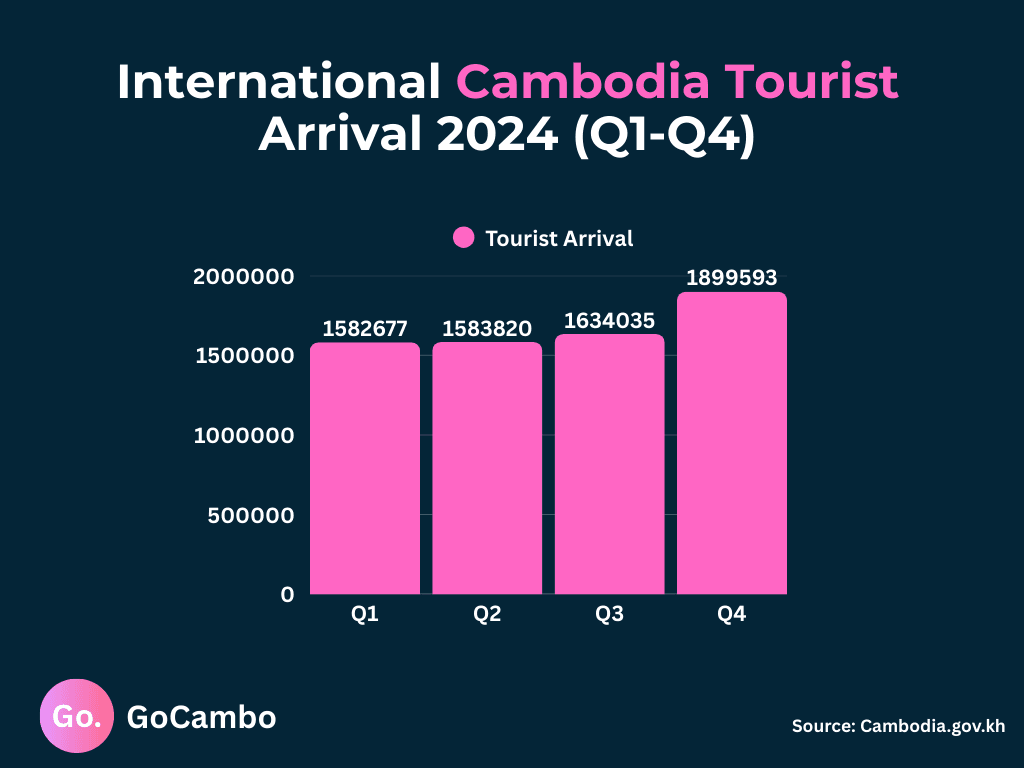Cambodia is reshaping its tourism industry with smart solutions designed to enhance visitor experiences and boost competitiveness. Through digital innovation and infrastructure investments, Cambodia smart tourism infrastructure is evolving to support recovery and long-term growth.
A National Vision by 2030: Cambodia Smart Tourism Infrastructure
The government’s TourismTech Roadmap sets a clear target: position Cambodia as a leading regional tourism hub by 2030. The plan prioritizes innovation through tools like IoT, AI, Big Data, and digital transactions. At the same time, it emphasizes improving tech literacy across the sector.
This roadmap aligns with Cambodia’s role in the ASEAN Smart Cities Network, with Phnom Penh, Battambang, and Siem Reap chosen as pilot cities. These locations are spearheading initiatives such as digital ticketing, integrated transportation, and smart signage. Together, they serve as test beds for nationwide adoption.
Post-Pandemic Recovery and Digital Adoption

Cambodia’s tourism rebound is evident. The country reported an 11.7% rise in international arrivals and a 50% surge in tourism revenue after global travel resumed. This recovery is reinforced by government measures under the National Tourism Roadmap (2021–2025), which includes financial incentives, digital diffusion, and workforce upskilling.
Read Also: Cambodia Tourism Industry Recovery and the Road Ahead
The shift toward digital tools is equally striking. Digital payment transactions rose 34.5% in 2021, while more than 80% of Cambodians now use e-wallet accounts. For tourists, this means seamless transactions for tickets, dining, and accommodation, reflecting Cambodia’s readiness for a digitally enabled visitor economy.
E-Visa Reforming Cambodia Smart Tourism Infrastructure
A standout reform is the recent adjustment to e-visa fees. From January 2025, tourist e-visa fees dropped from $36 to $30, while business e-visas fell from $42 to $35. This reduction lowers barriers for entry and makes Cambodia more attractive to both leisure and business travelers.
By digitizing visa processes and cutting costs, Cambodia ensures smoother travel planning. It also signals a clear commitment to boosting visitor flows and simplifying access in a competitive regional tourism landscape.
Smart Tourism Corridors and Enhanced Experiences
Cambodia is also investing in visitor-facing smart infrastructure. The Siem Reap Smart Tourism Corridor focuses on improving the Angkor Wat experience. Efforts include smart signage, digital ticketing, and visitor apps, all designed to streamline navigation, reduce queues, and promote sustainability.
These upgrades highlight how technology can transform cultural tourism. By integrating smart tools into heritage management, Cambodia not only protects its landmarks but also enhances visitor satisfaction.
Seamless Connectivity with Mobile Networks
Connectivity is essential for modern travelers, and Cambodia is taking steps to deliver it. Smart Axiata currently provides the highest mobile quality of service (QoS) in urban and tourist areas, with 4G coverage available 95% of the time.
Plans for 5G rollout in Phnom Penh and other major cities are underway. This ensures tourists can access real-time navigation, translation apps, and digital services without interruption. Reliable connectivity strengthens Cambodia’s appeal to tech-savvy travelers who expect constant online access.
Inclusive Growth and Long-Term Outlook
Cambodia’s urban population is projected to reach 40% by 2030, fueling demand for smart city and tourism services. Infrastructure spending is expected to exceed $2 billion annually, showing strong commitment to both urban and tourism modernization.
By aligning national strategies with global tourism trends, Cambodia is preparing for a more sustainable and competitive future. From e-visas to smart corridors and digital payments, the country is laying a foundation that benefits visitors, businesses, and local communities alike.
Cambodia Smart Tourism Infrastructure: In Other Words…
The country’s efforts to build Cambodia smart tourism infrastructure are more than short-term recovery strategies. They are long-term investments in competitiveness, resilience, and visitor satisfaction. By combining visionary roadmaps with practical reforms like e-visa fee cuts and advanced mobile networks, Cambodia is positioning itself as one of Southeast Asia’s most forward-looking destinations.
Read Also: Cambodia Aviation Infrastructure Growth Takes Off
